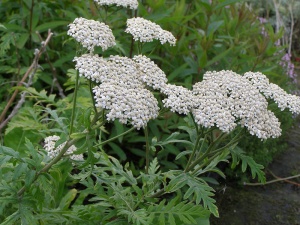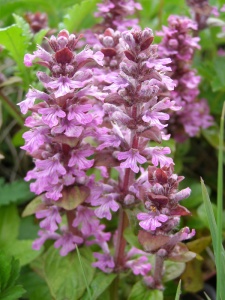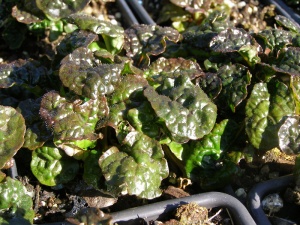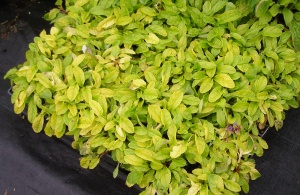All Products
Large flat heads of many small white flowers. Imposing clumps of divided, feathery, grey-green, hairy leaves. 100cm. Sun or part shade. Any soil. Will flower from June to frosts if dead-headed. Very hardy. In the wild in Turkey is a woodland plant. Often confused with Tanacetum macrophyllum, which has much larger, coarser leaves, is clump-forming rather than semi-shrubby, with larger flat heads of a dull white and seeds over-enthusiastically.
Broadleaf semi-evergreen perennial or bulb with green foliage. In summer, it produces beautiful blue flowers. This plant features a grassy texture and attracts bees and butterflies, making it an excellent addition to pollinator gardens. As for the size, it typically reaches a height of around 60-90 centimeters (24-36 inches).
Spikes of dark blue flowers. Large brownish-green leaves colouring best in sun. Probably the largest-leaved ajuga.20-30cm. Any soil in sun or shade. April.
unique form with many pure white flowers produced even on the laterals but with purple leaves and bracts at flowering time. The summer leaves are greener. Vigorous and spreading. 15cm. April /May. Any dampish soil in part shade. A superb combination of colours. New and discovered by Geoff Hitchens.
Spikes of pinky-mauve flowers over brown-highlighted, green leaves. Summer leaves greener. Vigorous and spreading. 15 to 20cm. April/May and can repeat. Any dampish soil in part shade. Named for, and found by, Julia Leslie. Very pretty.
Brilliant blue flowers on very short stems. Rich dark purple, but very small and crispy, leaves. Spreads much more slowly than the normal types. 5 to 10cm. April/May. Any dampish soil in part shade. One of our favourites.
Bright blue flowers on short spikes. Brilliant golden leaves, especially when growing strongly in Spring and early Summer. 15cm, April/May. Any dampish soil in part shade. Found by Ken Page.
Tubular flowers in red, black, white and green in terminal clusters. Leaves are dark green with a pure white margin. 75 to 100cm. From July to October. Rich, light soil, not too wet in winter, in part shade. Runs when happy. Plant deeply or pot culture.
Umbels of white, cow parsley, flowers. The leaves are a superb rich yellow and a large clump looks magnificent. Clump-forming and may seed about. To 120cm. May/June. Grows best in dry part shade but damper full sun could be tried. Leafs up over-winter and is good in early spring. Summer-dormant. New.
Huge leaves, showing the influence of italicum subsp neglectum and maculatum, which are almost entirely silver within the peripheral vein. Large and vigorous. Leaves emerge in October/ November. Flowers large and pale green. Found in the garden of Henry Ross, Strongsville, Ohio. USA.

.jpg)


.jpg)

.jpg)

.jpg)
.jpg)
.jpg)
.jpg)

.jpg)

.jpg)
.jpg)
.jpg)
.jpg)

.jpg)
.jpg)
.jpg)
.jpg)
.jpg)